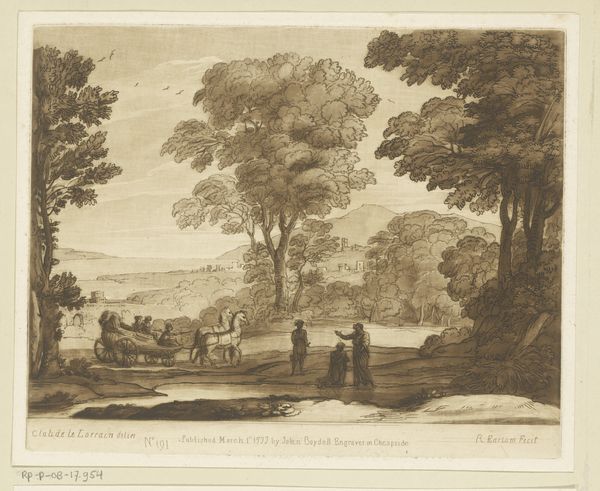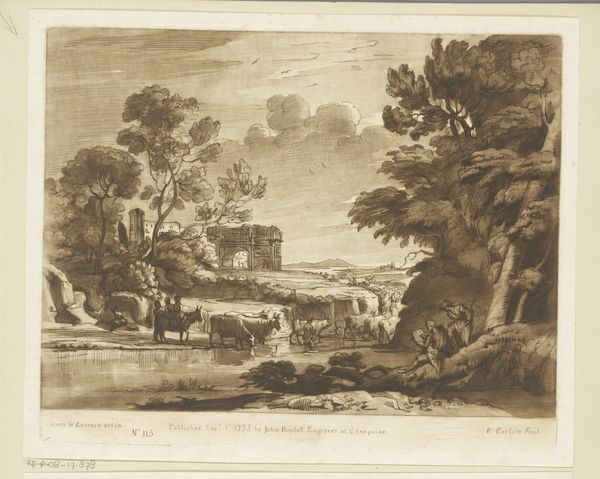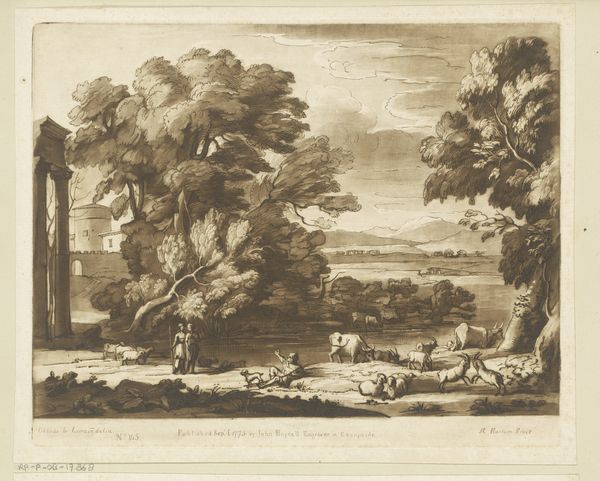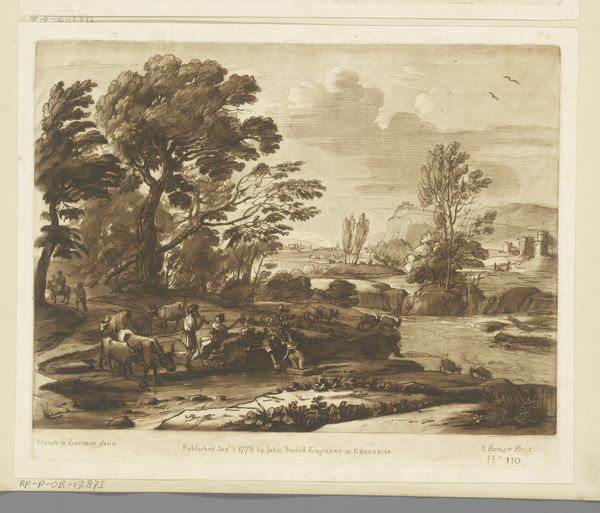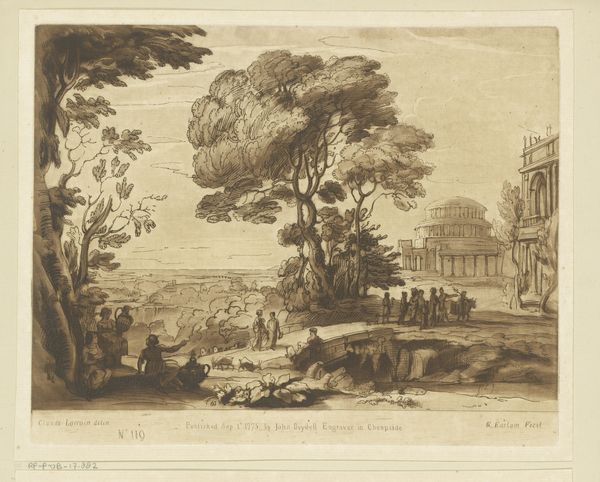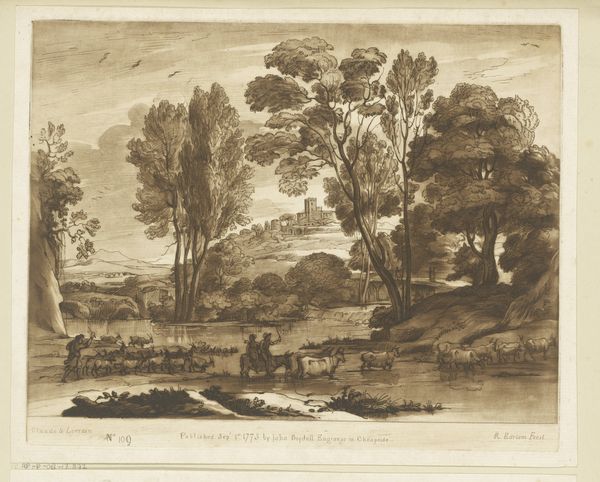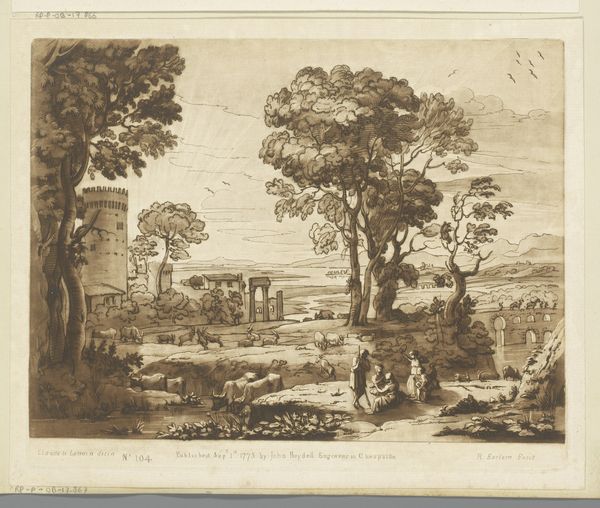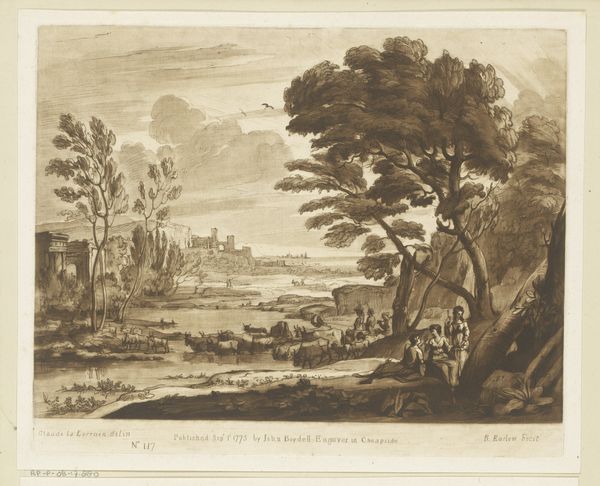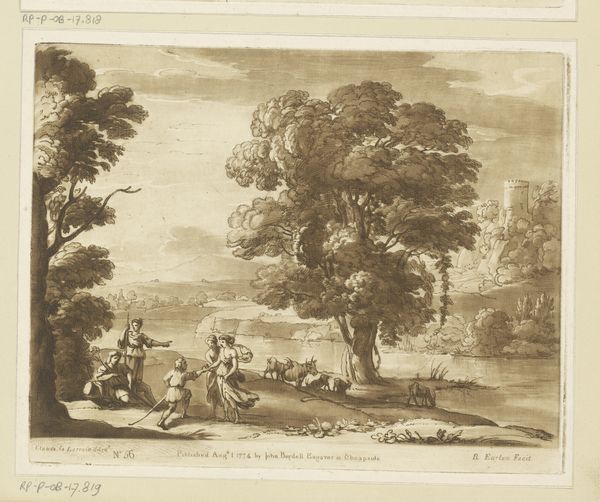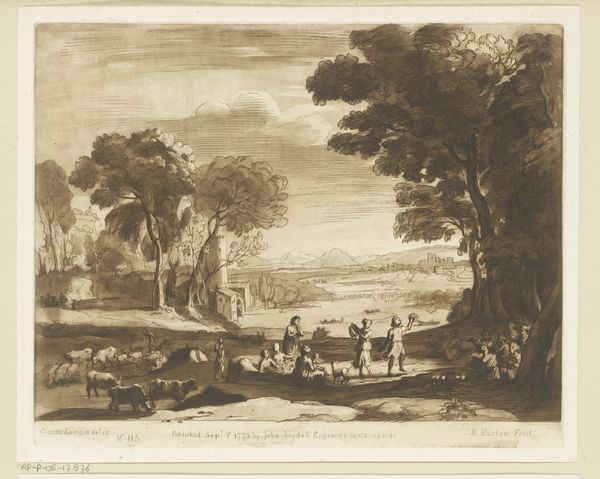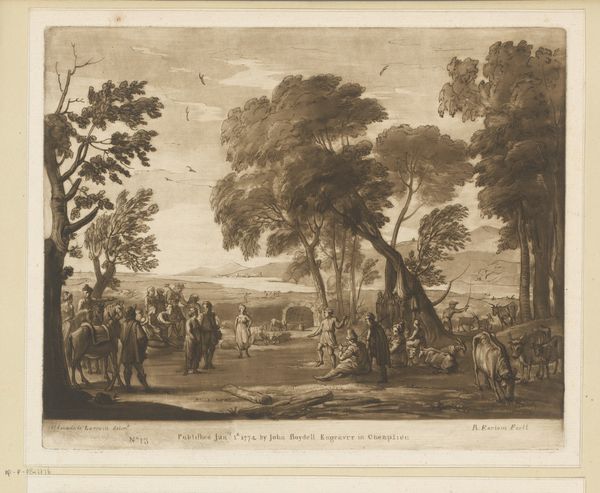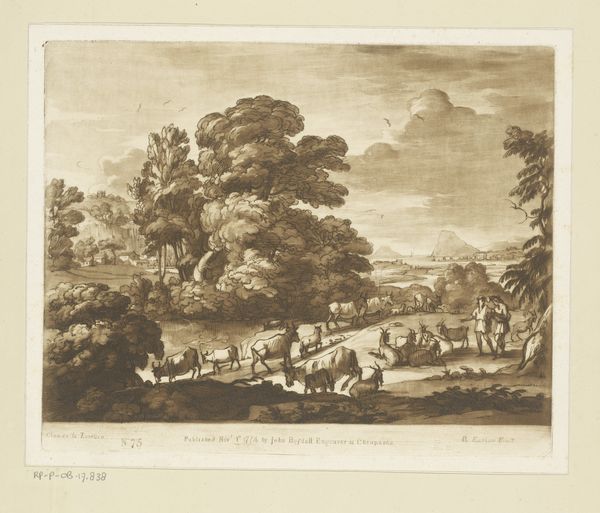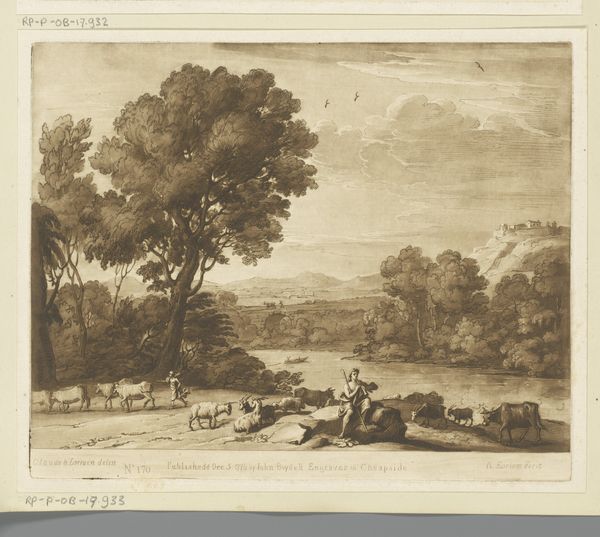
Landschap met ossen grazend aan een oever en de Boog van Titus Possibly 1776 - 1779
0:00
0:00
print, etching, engraving
# print
#
etching
#
landscape
#
classical-realism
#
history-painting
#
engraving
Dimensions: height 207 mm, width 260 mm
Copyright: Rijks Museum: Open Domain
Curator: What a gentle scene. We’re looking at “Landschap met ossen grazend aan een oever en de Boog van Titus,” or "Landscape with oxen grazing on a bank and the Arch of Titus." It's believed to have been created by Richard Earlom sometime between 1776 and 1779. Editor: It feels almost dreamlike. A pastoral scene, yes, but with this… ancient Roman ruin sort of popping out in the background. Like a memory surfacing. Curator: The inclusion of the Arch of Titus, a significant Roman monument, lends this bucolic image a powerful layer of historical resonance. It functions as a symbol, representing empire and time's inevitable passage. Editor: So, it's about nature versus culture, permanence versus transience. The oxen are here, living and breathing in the present, while the arch…it whispers of something far older. The light is incredible—almost sepia-toned, heightening that sense of distance. Curator: The artist captured an eternal motif by incorporating pastoral animals grazing contently amid the architectural remains of the past. Oxen are universally linked to stability and fertility and were highly prized in ancient Rome. It’s a powerful dichotomy. Editor: Do you think Earlom felt a little melancholy, maybe, depicting this juxtaposition? I can imagine that the ruin represents all past human triumphs or failures as judged against the natural and unstoppable processes. Curator: It's interesting to speculate, given how effectively he communicates symbolic messages via these engravings. Such art can spark ideas about permanence, decline, and the cycle of nature through carefully positioned imagery that creates layers of visual narrative. Editor: That’s something. All these thoughts come up from just one still image. Curator: This etching demonstrates how historical elements and bucolic motifs were brought together to inspire reflection. One can explore themes of remembrance and continuity by learning the importance of symbols in historical landscape art, as illustrated by Richard Earlom's artwork. Editor: It's a great reminder of how different times impact our lives and art today.
Comments
No comments
Be the first to comment and join the conversation on the ultimate creative platform.
